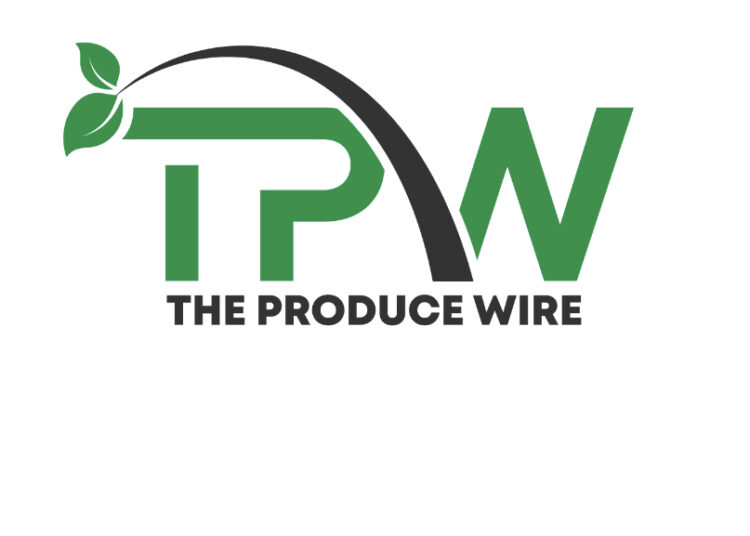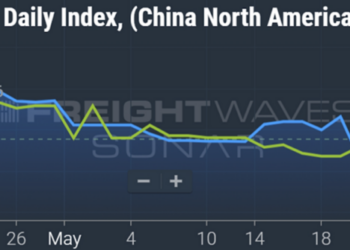Not only is a soft freight market generating significant headwinds for tech companies that serve the transportation and logistics industry, but trends in capital markets are also working against FreightTech startups. Raising venture capital is harder, valuations are lower and the path to a successful exit is more difficult to navigate.
“The FreightTech funding environment will probably be in a lull for the next year — 2024 may still be a tough funding environment broadly,” said Chris Stallman, a partner at Fontinalis Partners, a Detroit-based venture capital firm focused on mobility with a portfolio that includes Chain.io, Elementum, FreightWaves, SmartKargo, Veho and Turo. Past portfolio companies that Fontinalis has exited include Lyft, Postmates, Nutonomy and Telogis.
In the second quarter of 2022, Federal Reserve Chairman Jerome Powell began sharply raising the federal funds rate, the cost for financial institutions to borrow money overnight, in an attempt to curb inflation, which was averaging 8% that year. Higher fed rates slowed down the flow of money across the economy, tightening credit conditions, raising bond yields and reducing asset prices.
Venture capitalists are getting squeezed from both ends: The floor, the minimum return that their limited partners expect, is rising, while the valuations of late-stage companies are falling. Ten-year Treasury bonds are now yielding approximately 4.5%, which means that a venture capitalist who holds his or her LPs’ money for 10 years has to return 1.55x the initial investment just to clear the risk-free rate. In theory, that should force VCs out on the risk curve in order to deliver superior returns, but there are other factors militating against bullish sentiment.
For one, capital markets are pricing technology companies differently: They’re simply worth much less than they used to be. In the summer of 2021, median revenue multiples in the Bessemer Cloud Index were touching 18x, meaning that a typical publicly traded SaaS would enjoy a valuation 18 times its revenue. Those same multiples are now down between 5.5x and 6x.
“Rising interest rates suck a lot of capital out of the system,” Stallman explained. “LPs become more risk averse, and that’s resulted in VCs becoming slightly more risk averse. We can’t take undue risks without a lot of upside, which translates into pricing rounds lower so that if they do achieve what they seek to achieve the returns are higher — this puts a lot of downward pressure on tech company valuations.”
So while venture capitalists’ portfolio investments have to perform better than ever just to outpace Treasury yields, the potential upside on the best-performing companies is being constrained by lower valuations. Identifying the right founding team and shepherding it to product market fit, growth and through multiple capital raises starts to look more like threading a needle than playing a high-risk, high-reward game of chance.
“In a zero interest rate environment, even if the company doesn’t figure it out, if they have even a semblance of [product market fit], they can raise their next round,” Stallman said. “In this tighter environment, they really really need to figure it out — they have to hit their objectives and targets. We see a financing risk that’s higher than it was in 2020 or 2021, because we know capital scarcity means their margin for error is so much lower.”
By “capital scarcity,” Stallman was referring to generally lower levels of venture funding on a global basis. According to Crunchbase, global VC funding reached $221 billion in the first three quarters of 2023, a 42% drop from the $381 billion deployed in the first three quarters of 2022. Late-stage deals have held up better than seed and angel rounds: Crunchbase reported 3,570 angel and seed rounds in Q3 2023, down from 5,917 in Q3 2022, while the count of late-stage and technology growth deals fell to 490 in Q3 2023 from 670 in Q3 2022 (although late-stage funding increased slightly from $39.2 billion in Q3 2022 to $42.9 billion in Q3 2023).
“Our deal flow is off the charts right now because companies can no longer start a financing round on a Monday and get term sheets on a Friday,” Stallman explained. “Now they’re having to go out and talk to more groups; they’re not building quite as much early momentum in their processes. We’re seeing so many more companies out there in market because everyone’s talking to every investor.”
FreightTech in particular has lost a couple of key reference points that stimulated investment in digital freight brokerage: Convoy and Transfix. Convoy, valued at $3.7 billion as late as an April 2022 funding round, shut down its freight operations on Oct. 19. After it breached debt covenants, Hercules Capital took over in order to wind down the business, ultimately selling the technology platform to San Francisco-based digital freight forwarder Flexport for an undisclosed sum. Meanwhile, on the very same day, Transfix closed a $40 million Series F funding round that slashed its valuation by 60%, from $940 million to $376 million.
The failure of those companies to deliver returns to their investors will have a chilling effect on funding for operationally intensive, low-margin marketplace businesses like digital freight brokerages. Many venture capitalists are momentum investors, chasing hot trends that look like they’ll pay off, if only by virtue of the fact that there are bigger, later-stage players looking to get in on the action too. But momentum can fade just as quickly as it builds, and after a couple of conspicuous flops in a sector like digital freight brokerage, appetite for similar companies can disappear.
“You’re always going to find venture investors playing a momentum story,” Stallman said. “In their early days, a number of businesses like digital freight marketplaces and digital 3PLs look like sexy disruptors and post very strong growth but many often mature into looking like the companies they’re disrupting, and at the end of the holding period they look like their comps, worth 2x revenue. Founders and VCs are learning a lot of this at the moment. A lot of venture is a psychology game: There’s so much anchoring that’s involved, a lot of investors are momentum players, and the second they feel momentum is no longer there, they become very risk averse and pull back.”
Stallman said that despite tighter monetary conditions and lower valuations, many funds still have significant dry powder. The market for Series A and B rounds isn’t great, he said, so larger funds are looking to get in earlier, even as early as pre-seed and seed stage, where the market hasn’t seen as much of a pullback.
“The earliest stages are still very active: Pre-seed rounds are $1 [million] to $2 million for any founder with credibility, seed is $4 [million] to $6 million, which pushes As to $10 [million] to $12 million when they do get done — this is still pushing a lot of dollars onto founders very early on,” Stallman said. “We see Y-Combinator companies raising millions just a few months into their journey; it’s great to have the capital to get the runway but it’s important to maintain some flexibility. Every investor is preaching efficiency and companies are taking a lot of action to reduce burn and lengthen runways, so we will hopefully be able to see companies hit product-market fit before they raise too much capital.”
For its part, Fontinalis is looking at digital infrastructure firms that can help supply chain participants fundamentally rebuild their tech stacks, which in many cases are becoming overloaded, clogged and clunky with two many point-solution tools and overlapping, shoddily connected architectures.
“In a first-wave moment you get these point solutions — visibility tools or process automation tools, and those tend to be point solutions,” Stallman explained. “You find that with a lot of point solutions, IT departments have procured a lot of stuff that doesn’t talk to each other. We back a few companies that are in API models or data interconnectivity models, things like that.
FreightTech saw a lot of tools come to market and now IT teams have to rebuild their tech stacks to work in a new way and rebuild foundations from scratch.”
Stallman remained confident that despite the harsher conditions for FreightTech startups, it’s a great time for him to identify and partner with great founders who need capital to fund their companies.
“I continue to be a big believer in FreightTech and think it will endure some bumps along the way,” Stallman said. “When the market cools down is when we find the founders that truly execute well. They’ll have a shining light on them: There may be a little more pain and a few more failures, but hopefully when we get to the other side the companies that navigate these conditions well will be at an advantage to their competitors.”
The post Where does FreightTech go from here? appeared first on FreightWaves.














